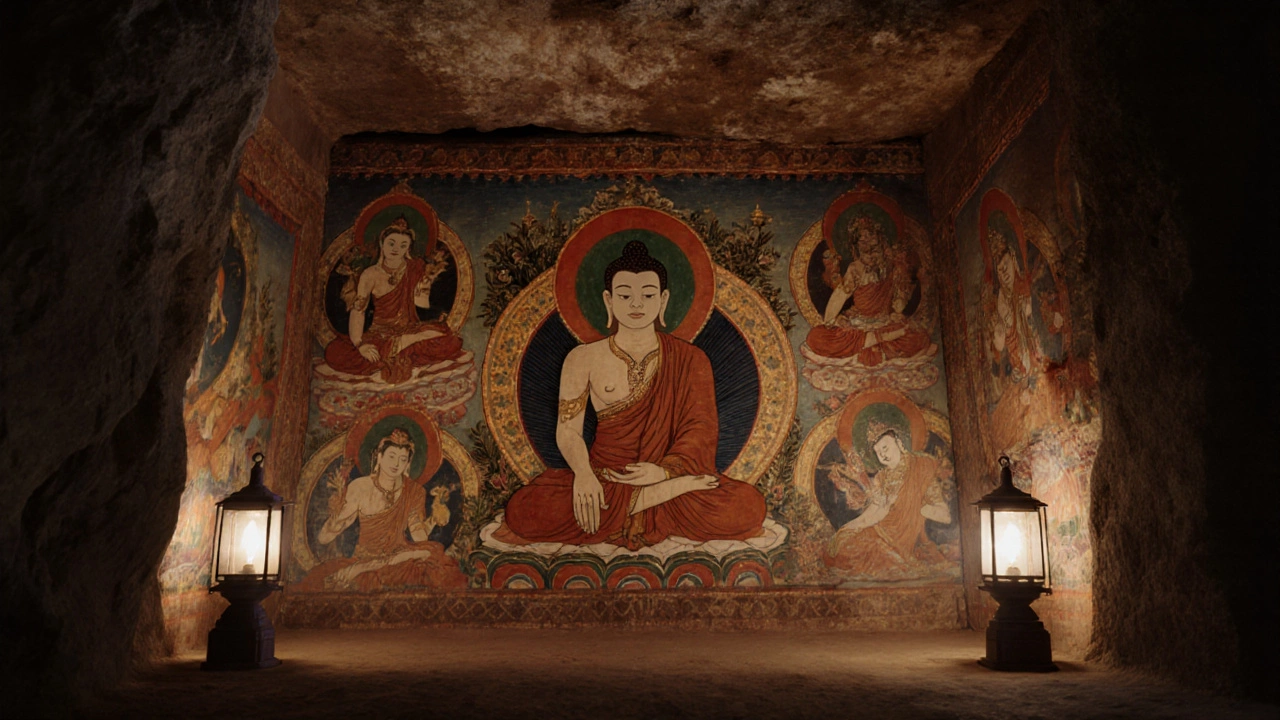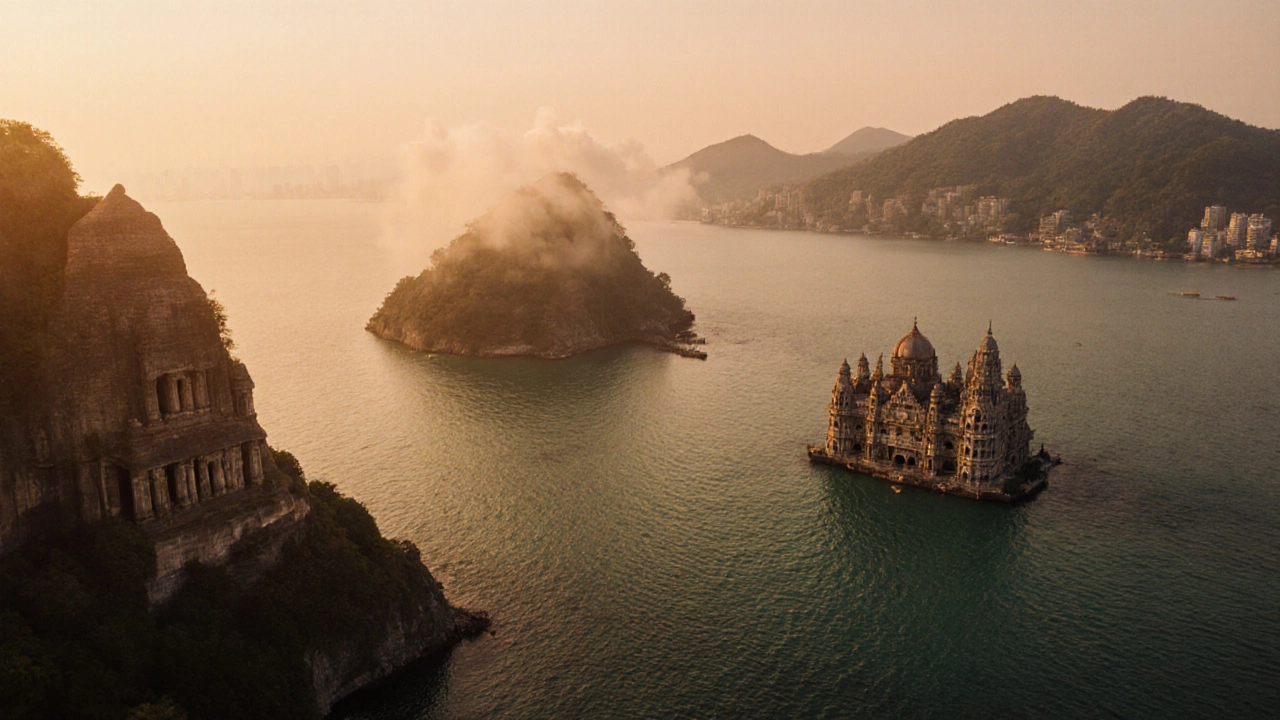UNESCO World Heritage Sites Quiz
When we talk about World Heritage Site is a UNESCO‑designated landmark of cultural or natural significance, India ranks third worldwide with 42 sites as of 2025. Yet the distribution isn’t even-some states boast a cluster while others have just one. If you’ve ever wondered which Indian state has the most World Heritage sites, this guide lays out the numbers, the famous landmarks, and why the tally matters for travelers and heritage buffs alike.
Why State‑Level Counts Matter
Knowing which state leads the pack helps you plan a heritage‑heavy itinerary without hopping back and forth across the country. It also shines a light on regional conservation efforts and the historic narratives that each state preserves. For instance, Maharashtra’s caves tell the story of ancient Buddhist art, while Karnataka’s monuments span from Hoysala temples to colonial forts.
Current Indian State Rankings (2025)
Below is the latest breakdown of UNESCO World Heritage sites by state, based on the UNESCO World Heritage Centre’s official list updated in July 2025.
| State | Number of Sites | Key Sites (Examples) |
|---|---|---|
| Maharashtra | 8 | Ajanta Caves, Ellora Caves, Elephanta Caves, Chhatrapati Shivaji Terminus, Western Ghats (part) |
| Uttar Pradesh | 7 | Agra Fort, Taj Mahal, Fatehpur Sikri, Ganga River (Cultural Landscape) |
| Karnataka | 6 | Hampi, Pattadakal, Group of Monuments at Hampi, Western Ghats (part) |
| Rajasthan | 5 | Hill Forts of Rajasthan (multiple), Jantar Mantar, Keoladeo National Park |
| Tamil Nadu | 5 | Mahabalipuram, Brihadeeswarar Temple, Group of Monuments at Hampi (shared) |
| Madhya Pradesh | 4 | Khajuraho Group of Monuments, Buddhist Monuments at Sanchi |
| Other states (each) | 1-3 | Examples: Kashmir (Dal Lake Cultural Landscape), Gujarat (Rani ki Vav), Goa (Churches & Convents) |
From the table it’s clear that the state with the most World Heritage sites in India is Maharashtra, with eight entries. Its mix of ancient caves, colonial architecture, and ecological sites gives it a diverse heritage portfolio.
Deep Dive: Maharashtra’s Eight UNESCO Sites
Let’s explore why Maharashtra tops the list.
- Ajanta Caves - A series of 30 rock‑cut Buddhist monasteries dating back to the 2nd century BCE, celebrated for their murals and sculpture.
- Ellora Caves - A UNESCO‑listed complex of 34 monasteries and temples representing Buddhist, Hindu, and Jain traditions, carved between the 5th and 10th centuries CE.
- Elephanta Caves - Located on Elephanta Island near Mumbai, these 5th‑century Hindu shrines showcase the iconic Trimurti sculpture.
- Chhatrapati Shivaji Terminus (CST) - A Victorian‑Gothic railway station built in 1887, a marvel of colonial architecture.
- Western Ghats (Maharashtrian stretch) - Part of the world’s biodiversity hotspot, recognized for its endemic flora and fauna.
- Fort Aguada (Goa‑Maharashtra border) - Though often listed under Goa, the fort’s strategic importance ties into Maharashtra’s coastal defense history.
- Mahabaleshwar Temple - A lesser‑known yet culturally essential site reflecting post‑colonial religious practices.
- Hill Forts of the Sahyadri Range - Though not all individually listed, the collective recognition adds to Maharashtra’s count.
These sites span religion, architecture, and nature, making Maharashtra a micro‑cosm of India’s broader heritage narrative.

How the Numbers Have Evolved
UNESCO adds new sites every year, and India’s tally has grown from 31 in 2015 to 42 in 2025. Maharashtra’s lead has been steady since the early 2000s, when the Elephanta and Ajanta caves were inscribed. Uttar Pradesh closed the gap briefly after the Taj Mahal’s “extended buffer zone” was approved in 2018, but Maharashtra kept pulling ahead with the Western Ghats endorsement in 2020.
Planning a Heritage Tour by State
If you want to maximize your UNESCO experience, use the state rankings as a travel compass.
- Start in Maharashtra - Spend 5-7 days covering Ajanta, Ellora, and Elephanta. Combine them with a city stay in Mumbai to see CST.
- Move to Uttar Pradesh - Allocate 4 days for Agra’s monuments, then a day in Fatehpur Sikri.
- Head south to Karnataka - Hampi deserves at least 2 full days; Pattadakal can be a half‑day side trip.
- Finish in Rajasthan - Pick two forts (e.g., Amber and Chittorgarh) and the Keoladeo Wetlands for birdwatching.
This itinerary covers the top three states by count, giving you a taste of the country’s cultural breadth without excessive back‑tracking.

Common Questions About Indian UNESCO Sites
Below are quick answers to typical concerns travelers face.
- Do I need a special permit? Most sites are open to the public; a few wildlife sanctuaries require entry fees and limited permits.
- When is the best time to visit? October to March offers mild weather across most states, ideal for outdoor exploration.
- Are guides available? In major sites like Taj Mahal and Ajanta, certified guides are on‑site; you can also book local experts through the Archaeological Survey of India.
- Can I combine heritage with adventure? Absolutely-Hampi’s ruins sit near trekking routes, and the Western Ghats offer both heritage walks and treks.
- Is there a single ticket for multiple sites? Some states (e.g., Rajasthan’s forts) offer combined tickets; check state tourism boards for packages.
FAQs
Which Indian state has the highest number of UNESCO World Heritage sites?
Maharashtra leads with eight UNESCO World Heritage sites, ranging from ancient cave complexes to colonial architecture and natural reserves.
How often does UNESCO add new sites in India?
New sites are added roughly every two to three years after rigorous evaluation; India’s list grew from 31 in 2015 to 42 in 2025.
Can I visit multiple World Heritage sites in one day?
Only in rare cases where sites are very close (e.g., the hill forts of Rajasthan). Generally, each major site deserves at least half a day.
What is the difference between cultural and natural UNESCO sites?
Cultural sites highlight human achievements-architecture, art, archaeology-while natural sites protect ecosystems, geological formations, and biodiversity.
Is there any state with only natural World Heritage sites?
The Western Ghats stretch across multiple states; Maharashtra’s portion is recognized for its natural value, but no single state currently hosts only natural sites without a cultural counterpart.
